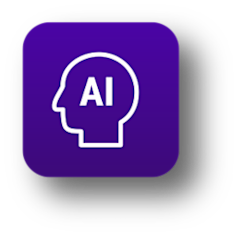Quant strategies have always been driven by data and technology – and AI is the latest chapter in that evolution. It’s important to note that AI in investing isn’t completely new. ML and NLP techniques have been researched and applied in our strategies for decades.
What’s different now is the magnitude of what these AI techniques can do, and the variety of data they can handle. Rather than replacing the tried-and-true quant methods, AI is enhancing them. Think of it as moving from a toolbox of hand tools to power tools – the job is the same, but we aim to do it faster and more effectively.
Machine learning
For example, machine learning (ML) can uncover complex patterns in data – including non-linear relationships and subtle interactions that traditional models might miss. This allows us to refine existing signals or discover new sources of alpha. For instance, by combining a classic reversal signal with news sentiment data, our quant team improved its ability to identify stocks likely to rebound after an overreaction. ML can also group similar securities based on shared traits like supply chain or technology use, adding depth to risk management. These kinds of insights help make quant models more adaptive to today’s fast-moving markets.
Natural language processing (NLP)
AI’s ability to interpret language has advanced rapidly - moving from simple word counts to large language models that can understand nuance, tone, and intent. By analyzing textual data such as news, financial reports, or employee reviews, and even listening to the tone of voice on earnings calls, natural language processing (NLP) techniques help reveal deeper insights into sentiment. Whether it’s gauging a CEO’s confidence, detecting subtle shifts in customer mood, or identifying key players in a company’s supply chain, NLP enriches our understanding of the broader corporate landscape. These richer signals feed into our quantitative models, potentially giving an edge in gauging market sentiment and corporate health.
Alternative data
The realm of alternative data – unconventional or non-traditional types of data that haven’t been used in the past for investment decisions – makes these AI techniques possible and increasingly essential. Unparalleled in volume, variety and speed of generation, alternative data offers real-time insights into economic activity that traditional data often misses. For example, credit card data can signal shifts in consumer spending, while shipping manifests can track global trade flows.
Separating noise from signal and converting the torrent of alternative data into tangible investment insights means combining innovative AI techniques with sensible economic hypotheses. Incorporating AI into investment processes offers both quant and fundamental investors the advantages of faster speed, broader sources of information, and better information processing. But it also necessitates being purposeful, clear-headed and transparent when using AI in our processes.





























